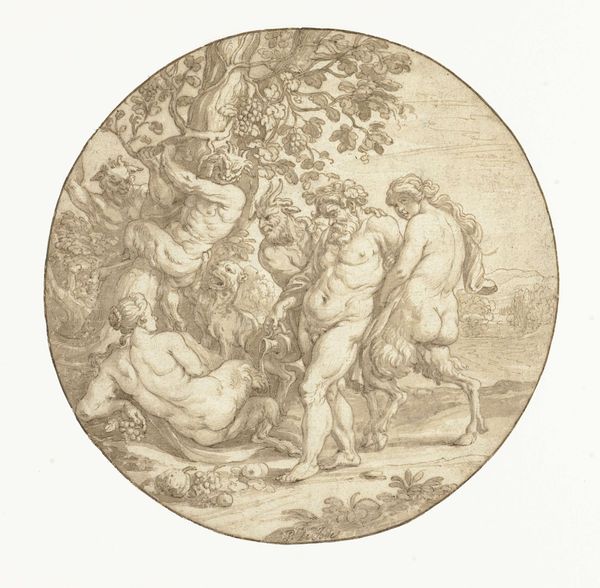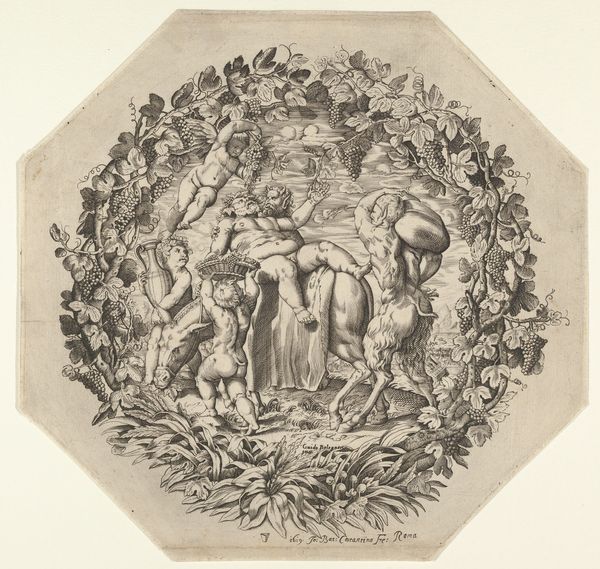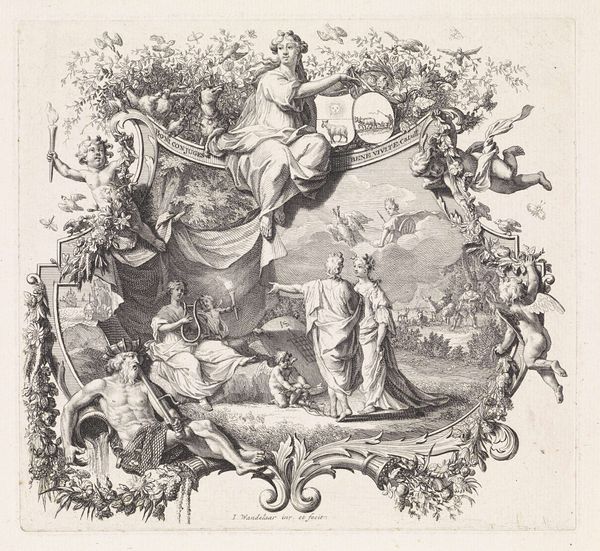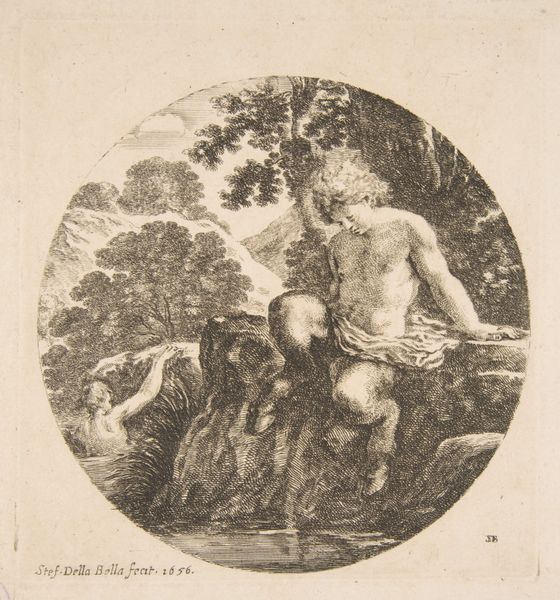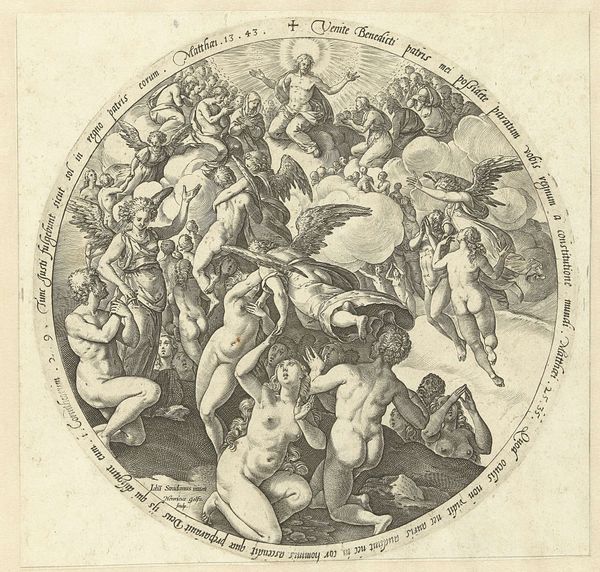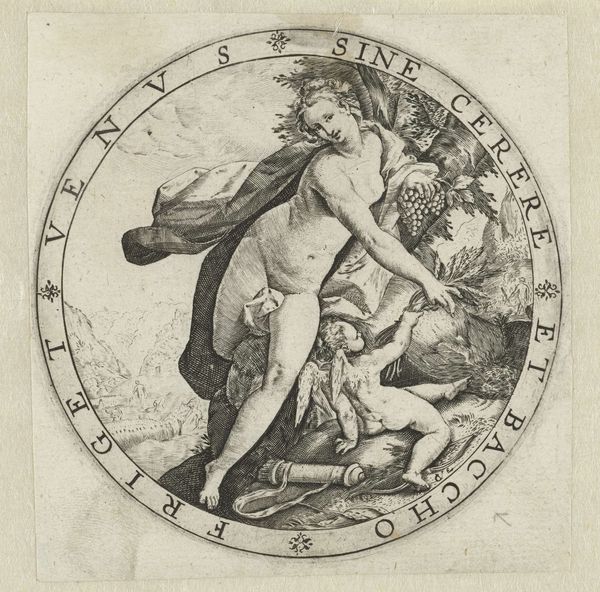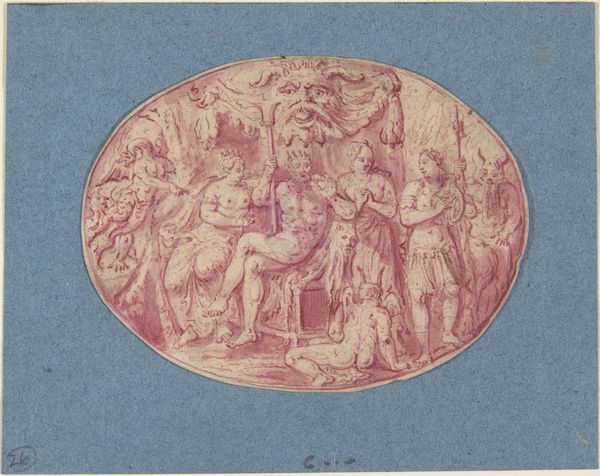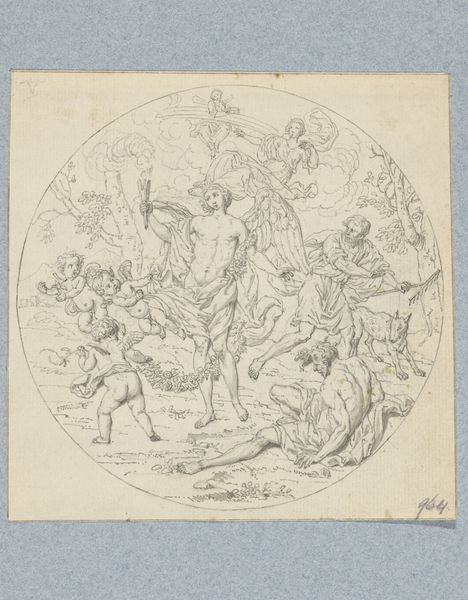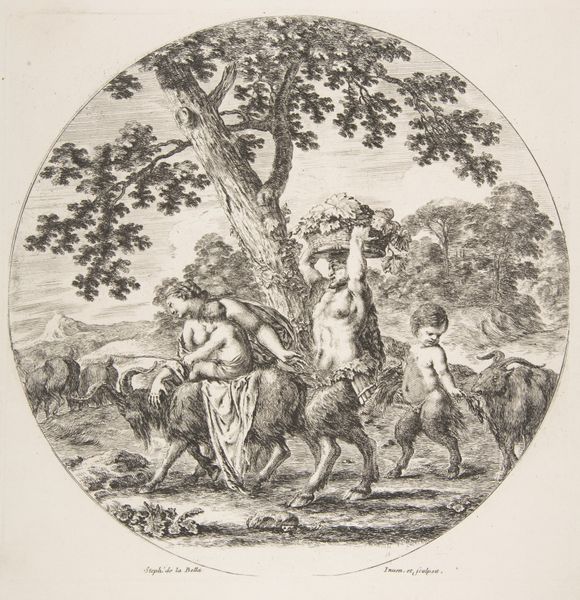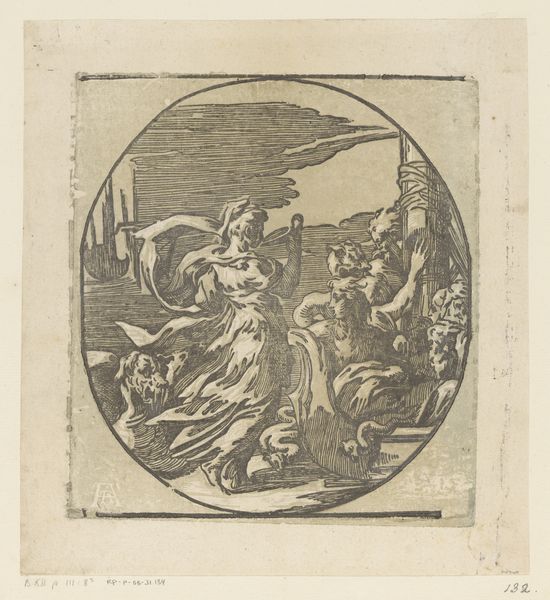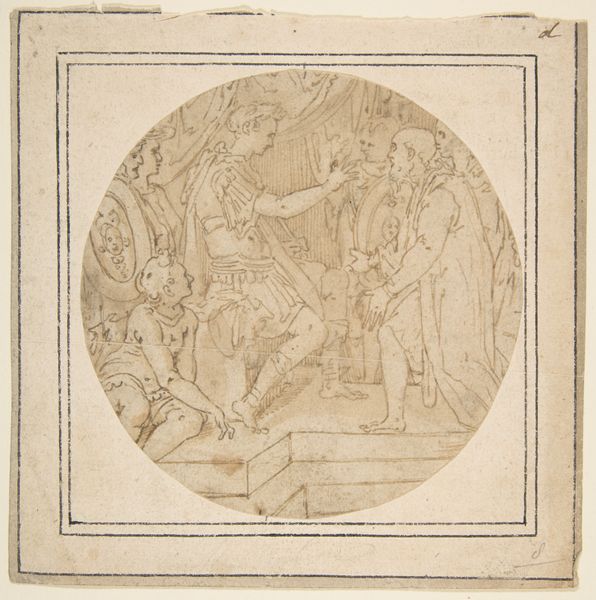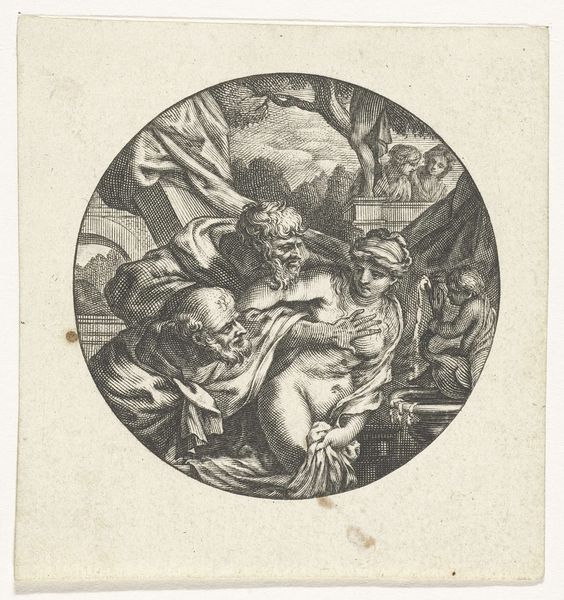
print, etching
#
allegory
#
baroque
# print
#
etching
#
figuration
Dimensions: 90 mm (height) x 118 mm (width) (plademaal)
Marguerite Louise De Lorme du Ronseray created this print, Amor med bue og pil, using a metal plate, likely copper, and acid to etch the delicate lines. The process is called etching. The image is rendered with remarkable precision. Notice the texture created by the fine web of lines, giving dimension to the cherubic figures and the landscape. Etching was a relatively new medium in the 18th century, offering artists a way to produce multiple copies of their work, and disseminate images widely. The labour intensive process involved coating a metal plate with a waxy substance, drawing the design into the wax, and then bathing the plate in acid. The acid bites into the exposed metal, creating grooves that hold ink. The plate is then printed onto paper. The level of detail in this print speaks to the artist's skill and control over the etching process. Prints like these made art more accessible, moving it away from unique, hand-painted works, and more into the realm of reproduction and consumption. This democratization of art allowed for wider distribution and appreciation.
Comments
No comments
Be the first to comment and join the conversation on the ultimate creative platform.

